- Home
- TV History
- Network Studios History
- Cameras
- Archives
- Viewseum
- About / Comments
Skip to content
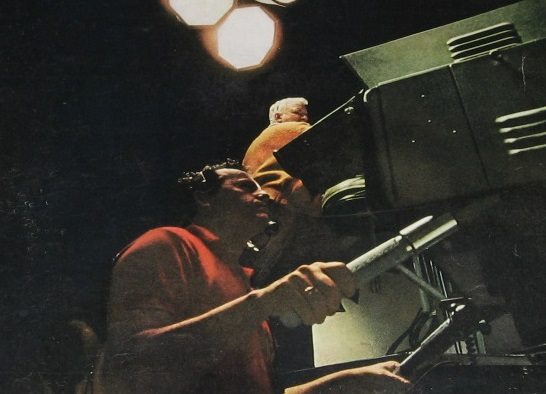

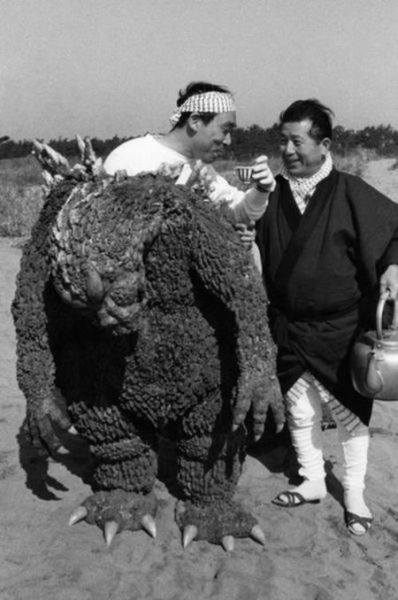



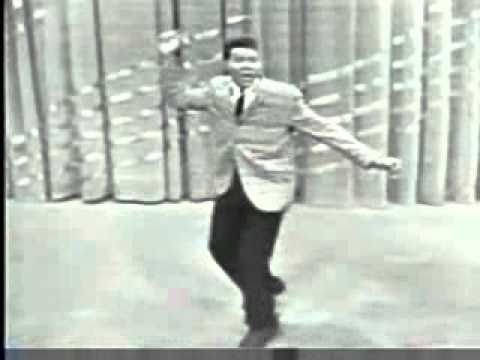

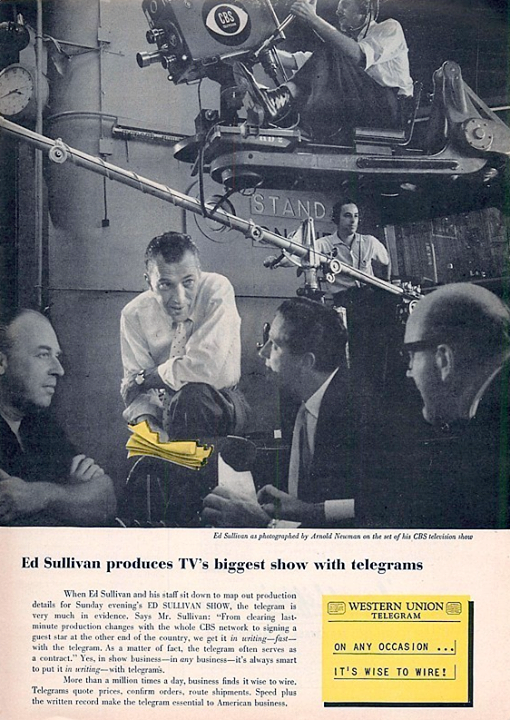

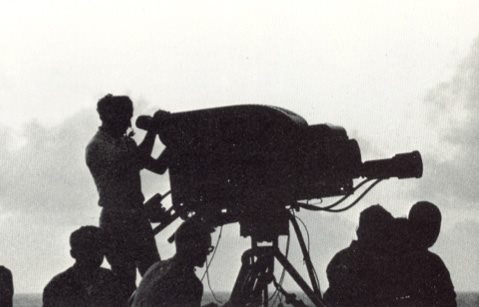

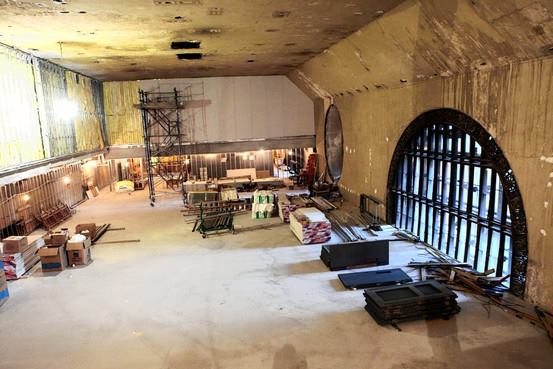

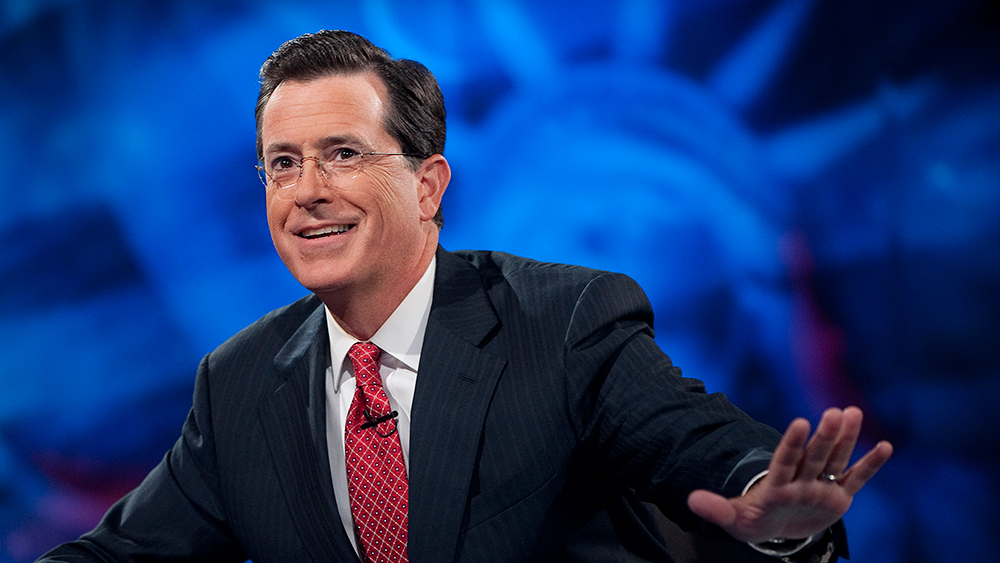

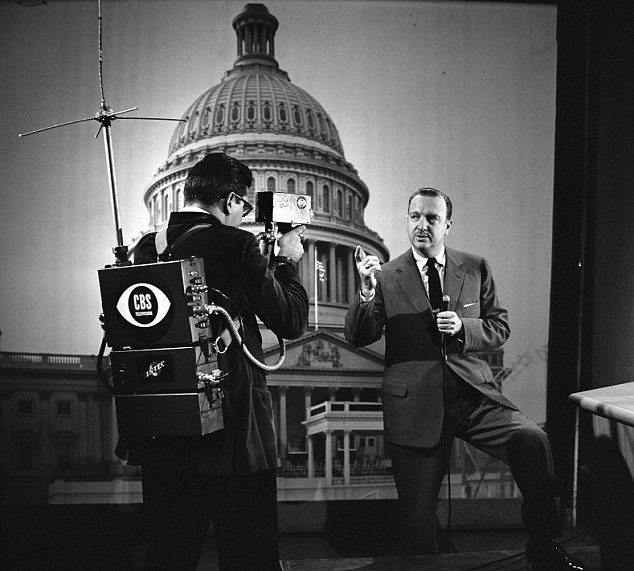

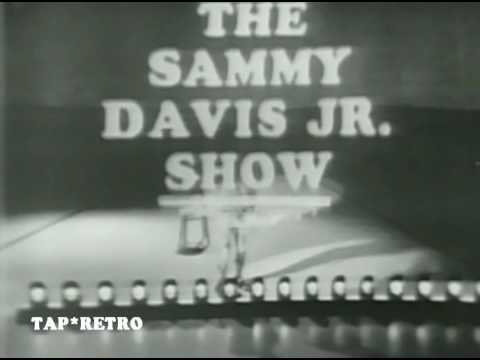

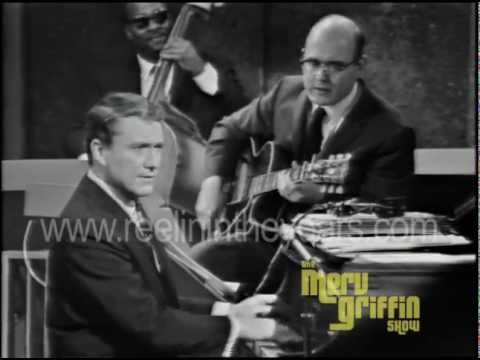

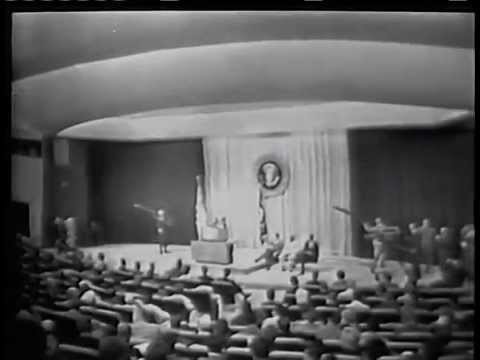

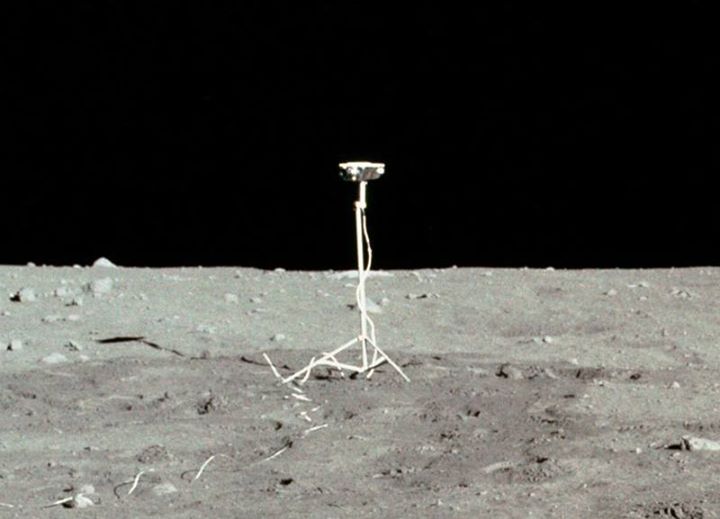

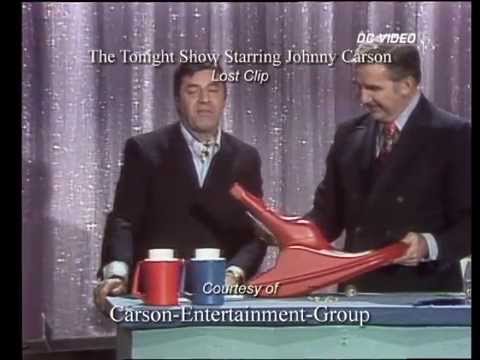

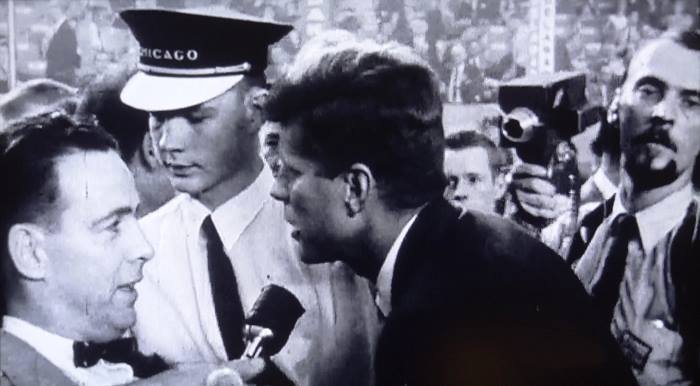



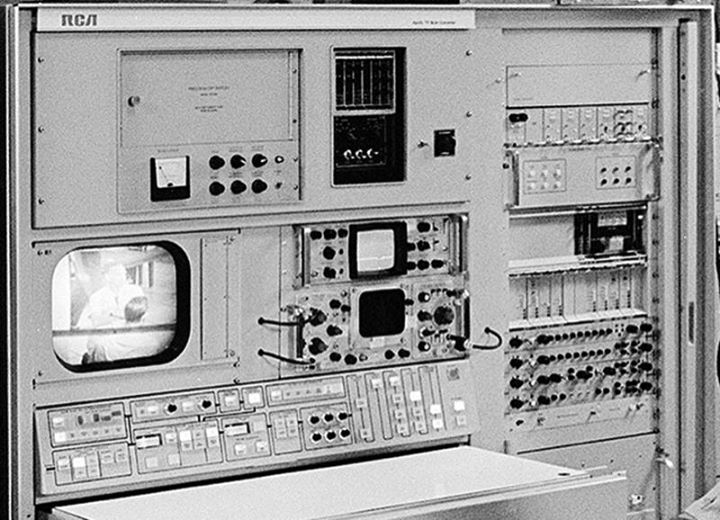

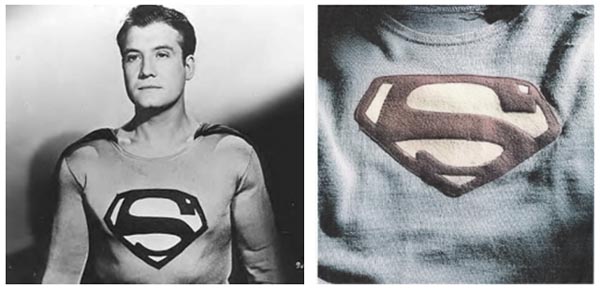



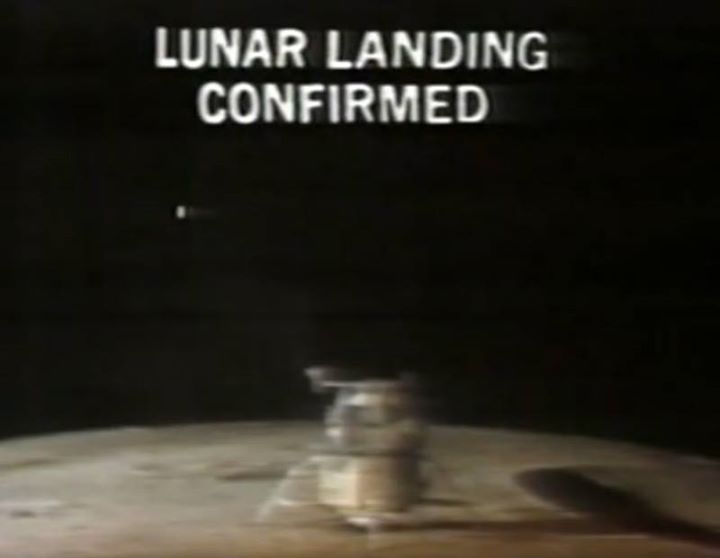

Posts in Category: TV History
Page 69 of 136
« Previous
1
2
3
4
5
6
7
8
9
10
11
12
13
14
15
16
17
18
19
20
21
22
23
24
25
26
27
28
29
30
31
32
33
34
35
36
37
38
39
40
41
42
43
44
45
46
47
48
49
50
51
52
53
54
55
56
57
58
59
60
61
62
63
64
65
66
67
68
69
70
71
72
73
74
75
76
77
78
79
80
81
82
83
84
85
86
87
88
89
90
91
92
93
94
95
96
97
98
99
100
101
102
103
104
105
106
107
108
109
110
111
112
113
114
115
116
117
118
119
120
121
122
123
124
125
126
127
128
129
130
131
132
133
134
135
136
Next » The First Color Picture I Ever Saw Of An RCA TK41…I Was Moved
On July 25, 2014
- TV History
The FIrst Color Picture I Ever Saw Of An RCA TK41
I was almost 13 when I first saw this photo and for a long time, I thought TK41s were light green. This was the front cover of an NBC magazine called ‘Star Time’ that introduced the 1963-64 fall lineup. If you sent them a postcard, they would send you one of these. Naturally, I sent two.
I can tell that this photo was taken at NBC Burbank by the shape of the viewfinder hood. They made their own custom versions in the shop there. The extra side vent is not unusual and some CBS TK41s had this too. This was and RCA aftermarket kit and came with vents for both doors. In the comment’s section is the full cover of the magazine. Did you have one of these magazines? NBC put these ‘Star Time’ magazines out for several years in the 60s and I think this was the first edition.
You Mean Godzilla Was Just A Guy In A Rubber Suit?
On July 25, 2014
- TV History
You Mean Godzilla Was Just A Guy In A Rubber Suit?
Yes, but not just any guy! It was Haruo Nakajima who’s now 85. He was considered by most to be the best “suit actor” in Japanese monster movie history. He started in 1954 with ‘Godzilla’ and played the role, and many other monsters for 23 years. Nakajima retired from suit acting upon completion of ‘Godzilla vs. Gigan’ in 1972, Enjoy and share!


‘ The Dean Martin Show’…September 16, 1965 – April 5, 1974
On July 25, 2014
- TV History
‘ The Dean Martin Show’…September 16, 1965 – April 5, 1974
If you watch this two minute clip, you’ll get the attitude of the show’s 9 year, 264 episode run, plus…a BIG surprise at the end!
An important key to Dean’s, and the show’s, popularity was the spontaneous, unrehearsed feel of each week’s production. Martin read his dialogue directly from cue cards and usually, if he flubbed a line or forgot a lyric, Martin would not do a retake and the mistake, and his recovery from it, went straight to tape and onto the air.
The show was done from NBC’s Burbank’s Studio 4 and was produced and directed by Greg Garrison. Among his Garrison’s first productions were ‘The Kate Smith Show’ and ‘Your Show of Shows’. He went on to produce and direct many television specials with Gene Kelly, Fred Astaire, Donald O’Connor and many others. He was probably best known for producing and directing this show and ‘The Dean Martin Celebrity Roasts’. He also directed one of television’s landmark 1960 presidential debates between John F. Kennedy and Richard Nixon.
During the summer months, Garrison kept Dean’s Thursday night time slot hot with some very good guest hosts. In 1966, Rowan and Martin hosted a few of Martin’s summer shows which were so well received that it put them on the trajectory as hosts of one of television’s most memorable series..’Rowan and Martin’s Laugh-In’.
As you see in the photos, the show started with RCA TK41s, but later graduated to TK44s around 1968. Enjoy and share!


History With A Twist…Dick Clark Debuts A Landmark Song
On July 25, 2014
- TV History
History With A Twist…Dick Clark Debuts A Landmark Song
This video opens with Dick doing the intro in front of an RCA TK10 at ABC New York. This is August 6, 1960 and this is the first time ‘The Twist’ was performed on television, but this is not ‘American Bandstand’. It’s ‘Dick Clark’s Saturday Beechnut Show’.
‘American Bandstand’ was Clark’s hit weekday show, which aired after school from WFIL in Philadelphia, but on February 5, 1958 ABC gave Clark a 7:30 Saturday night slot on the network for the New York based Beechnut Show, which usually came from The Little Theater on West 44th Street in Manhattan, but for some reason, this night it was done from ABC’s studios on West 66th Street as you can tell by the bleacher seating.
‘The Twist’ was Dick Clark’s second venture with Chubby, and one of his first as a producer. The year before, Clark produced Checker on a novelty single called ‘The Class’ in which the singer portrayed a school teacher with an unruly classroom of musical performers. https://www.youtube.com/watch?v=T2zXff_8-6w
The song’s premise allowed Checker to imitate such acts as Fats Domino, The Coasters, Elvis Presley, Cozy Cole, and Ricky Nelson, Frankie Avalon, and Fabian Forte as The Chipmunks trio. Clark sent the song out as his Christmas greeting, and it received such good response that Cameo-Parkway signed Checker to a recording contract. That single became Checker’s first release, charting at #38 in the spring of 1959. Clark’s wife gave Ernest Evans his stage name by reworking Fats and Domino into Chubby and Checker.
Hank Ballard wrote The Twist and had recorded it in late 1958. The song became popular on a Baltimore television dance show hosted by local DJ Buddy Dean; Dean recommended the song to Clark. When the song proved popular with his audience, Clark attempted to book Ballard to perform on the show. Ballard was unavailable, and Clark decided to record the song with a local artist and who better than his friend Chubby Checker, whose voice was very similar to Ballard’s. Exposure for the song on ‘American Bandstand’ and on ‘The Dick Clark Saturday Night Show’ helped propel the song to the top of the American charts. Now you know the whole story. Enjoy the clip and share!
http://www.youtube.com/watch?v=xbK0C9AYMd8&feature=related
Chubby Checker – The Twist
Now This Is Interesting….
On July 24, 2014
- TV History
Now This Is Interesting….
In all the photos I’ve seen of CBS Studio 50, I’ve never seen these “Stand By” and “Applause” signs on the proscenium as we see in the Western Union ad photo. Nor have I ever seen the audio control booth this close to the stage. There is a wide shot for comparison. Note Ray Bloch’s Orchestra is where this audio booth seems to be.
In the Lucy picture, you can see the booth where it was built in 1936 when CBS used this for a radio studio center. It looks to be at the end of the stage wing on the north wall, a good twenty or so feet from the proscenium. Anyone know when they moved the booth up? Enjoy and share!
Apollo 11 Splashdown: Day 9
On July 24, 2014
- TV History
Here is the final article of the Apollo 11 series written for Eyes Of A Generation by Jodie Peeler on this historic event, complete with videos. Our thanks to Jodie for a job well done! Enjoy and share!
______________________________________________________
The conclusion of what was not only the most elaborate flight ever undertaken by humans, but the most complicated television programs ever aired, started around lunchtime EDT on July 24. The networks began their special coverage about an hour before the Apollo 11 command module would separate from its service module and re-enter Earth’s atmosphere.
Although the networks had their correspondents arrayed around the nation and world for reaction, in one area they had to pool their resources.
While competition was elsewhere, cooperation was the watchword aboard the aircraft carrier USS Hornet, on station about 900 miles southwest of Hawaii, a gallant World War II veteran awaiting the arrival of three men back from the Moon. This was no ordinary splashdown, either: not just the return of the first lunar landing mission, but President Richard Nixon was aboard, taking a quick detour during a diplomatic trip around the world, ready to deliver a personal welcome home to the three astronauts.
Deployed with Hornet were dozens of technicians, camera operators, engineers and journalists whose job it was to relay the events back home. Underneath a 22-foot inflatable radome on Hornet’s flight deck was a portable satellite earth station developed by General Electric and Western Union International, beaming live color television pictures from Hornet to Jamesburg, California via Intelsat III. For the Apollo 11 deployment, ABC was selected to provide cameras and remote units.
Although the television pool aboard recovery ships was typically a two-man team, for this deployment all three television networks had newsmen aboard: Dallas Townsend of CBS, Ron Nessen of NBC, and Keith McBee of ABC. Mutual correspondent Don Blair handled the radio pool.
Experience with live recovery transmissions from deep in the Pacific during the Apollo 8 and Apollo 10 missions had taught the networks, GE, Western Union and the Navy a great deal. While the live broadcasts from USS Yorktown during Apollo 8 had numerous glitches and dropouts, increased cooperation and troubleshooting meant the live telecasts from Hornet went beautifully. Although Apollo 11 splashed down too far away from the ship to be caught on television, correspondent Ron Nessen relayed the happy words “They’re back from the moon!” to the audience at home. A giddy Walter Cronkite exclaimed, “Hot dog! There they are and they’re all right! Hot dog! Apollo 11 has made it!”
A little while later Hornet was close enough to the scene for cameras to capture distant pictures of the astronauts being hoisted aboard the famous helicopter 66 for the short ride to the ship. The cameras aboard Hornet captured it all: the helicopter landing, being lowered to the hangar deck, and then being wheeled back alongside the Mobile Quarantine Facility. Briskly the astronauts, clad in suits meant to quarantine them, walked across Hornet’s hangar deck into the MQF. About an hour later, after each had an initial medical exam and enjoyed a quick shower, the astronauts were welcomed home by President Nixon during a brief ceremony.
With the astronauts safely aboard Hornet, it was over – not only the epic journey of Apollo 11, but also the epic television programs that brought the journey to the people. The closing paragraphs of the CBS book “10:56:20 P.M. EDT 7/20/1969” sum up the final moments of the greatest television epic ever broadcast:
“At 3:25 p.m. the final credits began to roll on the television screen – a visual record of the people who had contributed to making television history during the coverage of the Apollo 11 astronauts’ epic adventure. It took seven minutes to complete the honor roll – the longest roster in television history.
“At 3:32 p.m. EDT, [executive producer Robert] Wussler and [CBS News Vice President Gordon] Manning shook hands around the control room, with [Clarence (Red)] Cross, [Joel] Banow and [Richard] Knox, their producer, director and associate director, then with CBS President Frank Stanton and CBS News President Richard S. Salant, both of whom had been in the control room throughout the four hours of splashdown coverage.
“There was an air of celebration in the studio and editorial area. Then everyone started to drift away. The most memorable week of television in their lives had come to an end.”
…
As this series of essays ends, I’d like to add a personal note: the opportunity to relive these historic days, and examine them through the prism of television history, has been its own journey for me. It’s brought challenges, but it’s also been a lot of fun. I’m grateful to Bobby for letting me share these little essays with you each day, and grateful to all who have read them, liked them, and made their own contributions. To all of you, my thanks.
Now, here’s some links with video. A Western Union International commercial from prior to splashdown, showing the satellite system deployed aboard Hornet:
http://www.youtube.com/watch?v=YjJKSpF10GM
Re-entry and recovery as broadcast by ABC, with Tom Jarriel and Jules
Bergman:
http://www.youtube.com/watch?v=DNAcHNsZ57g
At One Time, This Space Was Home To CBS Studios 41 and 42
On July 24, 2014
- TV History
This was the space formerly occupied by CBS Studios 41 and 42. I think this photo is from the early 80s and was probably taken when Donald Trump took over this space and re built two tennis courts here as the Vanderbilt Athletic Club. In 1966, a man from Hungary took over this space and installed a tennis court and an astroturf ski jump.
CBS to Keep Colbert’s ‘The Late Show’ in New York
On July 23, 2014
- TV History
JUST IN! CBS/Colbert To Keep ‘Late Show’ At Sullivan Theater
First Story
http://variety.com/2014/biz/news/stephen-colbert-to-keep-late-show-in-new-york-1201267630/
CBS to Keep Colbert’s ‘The Late Show’ in New York
CBS’ “Late Show” will remain in New York at the Ed Sullivan Theater with Stephen Colbert takes over hosting of the show next year, under an agreement announced on Wednesday by the network’s CEO Les…
Follow Up…The CBS Mini Camera Strikes Again
On July 23, 2014
- TV History
Follow Up…The CBS Mini Camera Strikes Again
Here’s Walter Cronkite in a great 1957 publicity photo related to the upcoming inauguration of President Eisenhower. CBS would be deploying several of it’s new Intercontinental Electronics mini cameras at the event. As we saw yesterday, CBS first used these cameras for floor interviews at the 1956 political conventions.
After some digging, I’ve come to the conclusion that this camera was built in the US by Intercontinental using a 1954 design from France’s CSF Electronics, which was created in the late 1890s as the French subsidiary of General Electric. What we know today as the Thomson brand of electronics sprang from CSF. Enjoy and share!


Classic! ‘Sammy Davis Jr. Show’ With TK41s From NBC Brooklyn
On July 23, 2014
- TV History
Classic! ‘Sammy Davis Jr. Show’ With TK41s
From NBC Brooklyn, here’s a clip from April 26, 1966 that opens with Sammy in front of a crane mounted RCA TK41. Behind the camera is NBC veteran Frank Gaeta.
https://www.youtube.com/watch?v=DXjKNl0C-AU
from April 22, 1966. thanks to fromthesidelines and wmbrown6 for the great comments and info on this clip.


Merv Griffin Gets A Ride On A Marconi Mark IV
On July 23, 2014
- TV History
Merv Griffin Gets A Ride On A Marconi Mark IV
This fun clip is from November 8, 1965. This was the first year of Merv’s Group W, syndicated daytime show and was done at The Little Theater at 240 West 44th Street in New York. This is now known as The Helen Hayes Theater.
In ’69, CBS picked up the show and moved it to late night to compete against Johnny Carson. The first season was done from The Cort Theater at 138 West 48th Street.
In the fall of 1970, Griffin relocated his show to Television City in Los Angeles, but without sidekick Arthur Treacher, who told him “at my age, I don’t want to move, especially to someplace that shakes”. From that point on, Griffin would do the announcing himself, and walk on stage with the phrase: “And now…, here I come!”
By early 1972, sensing that his time at CBS was ending, and tired of the restrictions imposed by the network, Griffin secretly signed a contract with rival company Metromedia. The contract with Metromedia would give him a syndication deal as soon as CBS canceled Griffin’s show. Within a few months, Griffin was fired by CBS. His new show began the following Monday and proved to be more successful than its network counterpart, running until 1986. Enjoy and share!
https://www.youtube.com/watch?v=iDs8JxxAnlU
Jazz guitar icon Jim Hall sits in with Mort Lindsey and the band but Merv insists on putting him through his paces in a mock audition from 1965. Merv shows o…


July 23, 1962…First World Wide Television Broadcast Via Telstar
On July 23, 2014
- TV History
July 23, 1962…First World Wide Television Broadcast Via Telstar
On Monday afternoon on this date, 52 years ago, CBS News anchorman Walter Cronkite entered NBC’s studios at 30 Rockefeller Plaza to co-host this historic broadcast with NBC’s Chet Huntley. ABC’s Howard K. Smith was at the UN Building. The twenty minute broadcast from the US to Europe was slated to start at 3 PM eastern, but the Telstar signal was acquired a few minutes early so they started then.
Aside from the historic transmission event, the sight of Cronkite and Hunley working together is nothing less than extraordinary and you will love the sign off at 40:23 which made everyone laugh!
Just after that, NBC Newsman Merrell Muller takes over and implies that only NBC carried the US to Europe program live here in the US.
A few hours later, all three networks did carry the Europe to US portion live with the hosts at NBC, but after seeing how well this went, I’ll bet CBS and ABC were sorry they opted out of this segment.
This is the only version of the entire US portion of the broadcast I can find and is queued to the start of the network coverage. As you will see, there are shots fed into NBC from all across the country including Cubs baseball from Chicago, President Kennedy in Washington, the Golden Gate Bridge in San Francisco, Mt. Rushmore, the Statue Of Liberty, buffalos on the planes, The Mormon Tabernacle Choir from Utah and much more.
In Europe and Canada, 100 million viewers tuned in and it seems that the baseball game was their favorite part. A few hours later, the tables would turn and Europe would broadcast live to the US with Howard K. Smith joining Cronkite and Huntley at NBC and all three networks would air this live, simultaneously.
There is more on this event in the very good story at the link below. Enjoy and Share!
http://www.history.com/news/the-birth-of-satellite-tv-50-years-ago
http://youtu.be/0IX7vC4Ts_A?t=9m58sWith behind the scenes stories from Bill Turner
45 Years Ago Today…Apollo 11 On The Way Home: Day 8
On July 23, 2014
- TV History
45 Years Ago Today…Apollo 11 On The Way Home: Day 8
Here is the eighth of nine daily articles written for Eyes Of A Generation by Jodie Peeler on this historic event, complete with videos. Enjoy and share!
______________________________________________________
Apollo 11’s Television Cameras:
As discussed in yesterday’s post, television cameras were carried by the Apollo spacecraft starting with the first manned mission in October 1968. Here’s the story of the television cameras that made it possible for viewers at home to watch what was going on in space.
Apollo 7 and Apollo 8 carried a small black-and-white slow-scan camera developed by RCA. Designed to operate within the limited bandwidth available for television downlink at the time, the RCA camera had a 320-line progressive scan format at 10 frames per second, and had a one-inch vidicon tube. As described yesterday, the television pictures sent back by the spacecraft were converted on Earth before being sent to NASA and then to the networks. Although more advanced capabilities were available by October 1968, NASA flew the RCA camera because it was already flight-qualified.
On Apollo 9, the first manned flight of the lunar module took place in Earth orbit. The LM would require its own camera, and a Westinghouse team led by Stan Lebar developed a slow-scan black-and-white video camera for the LM. It used a very sensitive secondary electron conduction tube unlike any other tube readily available, meant to provide detail from what was likely to be a dark and shadowy lunar surface. Although on landing missions it would ride in a compartment on the LM’s descent stage, it was carried in the cabin on Apollo 9 so the astronauts could test it out.
For television historians, the most intriguing camera made its debut on Apollo 10, the first flight to send color television from space.
Westinghouse realized that a mechanical color system similar to that championed by CBS during the “color war” of the late ’40s, was not much more complicated than black-and-white and could be kept far more compact than a full-blown color system. The problem of conversion to NTSC was taken care of with conversion equipment installed in Houston. So, in a way, CBS had the last laugh as field-sequential color pictures sent back the first color television pictures of Earth in May 1969.
One problem with earlier Apollo television transmissions was that the astronauts had no viewfinder or monitor, so Westinghouse developed a small black-and-white monitor that could be secured atop the camera to let them see what they were shooting.
The two camera systems developed by Westinghouse – the color unit in the Command Module, and the black-and-white unit attached to the LM – flew with Apollo 11 two months later. Color television came from inside the spacecraft at several points during the mission. When Neil Armstrong emerged from Eagle on July 20 to begin his climb down to the Moon, a compartment on Eagle’s descent stage opened, allowing the black-and-white lunar camera to capture his first steps. Once he was on the Moon, he removed the camera from its platform and placed it on a tripod a few yards from the LM. It captured all of Armstrong and Aldrin’s historic Moon walk, and still stands where they left it in July 1969.
Later cameras improved on these innovations – the color camera was adapted for lunar use by the Apollo 12 flight in November 1969, and in time for Apollo 15 RCA designed a sophisticated color camera mounted on the Lunar Rover that could be controlled from Houston, a system that sent back some of the most vivid moving pictures of the entire Apollo program. However, it’s those two Westinghouse cameras from Apollo 11 that captured the eight days when mankind made its most dramatic step into the future.
For more information on the Apollo cameras, try these links.
Stan Lebar’s memories of developing the Westinghouse lunar camera:
http://www.tvtechnology.com/feature-box/0124/tvs-longest-remote/202657
Bill Wood’s epic “Apollo Television” essay features information about all the cameras of Apollo:
http://www.hq.nasa.gov/alsj/ApolloTV-Acrobat5.pdf
Tomorrow: Our look at Apollo 11 ends as Armstrong, Aldrin and Collins take a fiery ride home, and television brings the story’s conclusion to a watching world.


Ultra Rare And HILARIOUS! This Is A LOL RIOT!
On July 22, 2014
- TV History
Ultra Rare And HILARIOUS! This Is A LOL RIOT!
Thanks to our friend David Crosthwait at DC Video in Los Angeles, here is a clip from a recently discovered reel of tape in Nevada. Jerry Lewis is guest hosting for Johnny Carson and…well…you’ll just have to watch this to see one of the funniest, impromptu bit’s I’ve ever seen. Enjoy and SHARE!
https://www.youtube.com/watch?v=MQYzkgsb2h0
This clip is courtesy of Carson-Entertainment-Group and Jerry Lewis Films. The Tonight Show Starring Johnny Carson: The Lost Clips. Guest host Jerry Lewis. T…
The 1956 Mini Cam Mystery…
On July 22, 2014
- TV History
Above is a shot of then Senator John F. Kennedy at the Democratic National Convention in Chicago being interviewed by CBS in August of 1956. Although RCA made a great mini cam which NBC used in the 1952 conventions, CBS would not buy them, and we all should now know by know about all the bad blood between them over the color system battles.
This camera in the Kennedy photo is most likely a prototype made by the French company, Intercontinental Electronics. The camera was four pounds and came with a thirty two pound back pack. The battery to power unit and broadcast the signal, which could go almost a mile, weighed over ten pounds.
CBS also used the unit at the Republican convention in San Francisco that year along with a three pound “vest pocket” camera made by Lockheed Engineering. Those items are seen in the second photo along with a Dage Porta Camera in the lower middle. The big camera is the RCA TK10, on the left is the Intercontinental Electronics camera and back pack and the man with the tiny camera is the legendary Sig Mickelson…the first president of CBS News. Enjoy and share!


Must See! ‘Let’s Make A Deal’ Pilot…Many Points Of Interest
On July 22, 2014
- TV History
Must See! ‘Let’s Make A Deal’ Pilot…Many Points Of Interest
This was shot May 25, 1963 in Studio 1 at NBC Burbank and the first minute is quite interesting! It opens with a long shot of Monty Hall introducing the show’s concept as a pitch to advertisers with an RCA TK41 in the foreground. As the camera zooms in, we notice the TK41 still has three cables, as do all the cameras in the studio…this is a big surprise!
By now, all the New York TK41s were using the single cable. I think the single cable came into use on the TK41B around 1958, but RCA made a conversion kit and NBC NY applied it to all their TK40s and TK41A models. I wonder why Burbank kept the triple cables? They were much heavier than the single cables and took extra utility men to handle them.
Next is the audience seating apron that Hall is sitting in. In the ’50s, the only access to the audience area was on the far left and right via the main staircases, but with no way to get to them center stage, access doors were added to the center aisles. Studio 3 had a similar apron that we have seen on ‘Laugh In’ pictures and that’s because ‘Let’s Make A Deal’ moved to Studio 3 during the first season and stayed there till December 27,1968 when the show moved to ABC.
You can only see about half way up into the 400+ seats in this video and as we saw in pictures from Studio 1 a few days ago, this was a very steep incline.
Finally at the very end is a pristine NBC Productions video logo with the TK41 turret flip. Speaking of lenses, notice how tiny the Zoomar studio size lens looks on the TK41.
The announcer and Mony’s side kick is Wendell Niles. The show was directed by Joe Behar who’d just won an Emmy the year before for ‘The Ernie Kovacs Show’. Behar would go on to many more years of directing ‘Days of our Lives’, ‘General Hospital’, and ‘The Young and the Restless’. If you spot something I missed, please let us know. Enjoy and share!
https://www.youtube.com/watch?v=pvNXm_5kLmo
This 37 minute pilot, produced on May 25, 1963 with Monty Hall as host and Wendell Niles as announcer/sidekick, led to the premiere of Let’s Make a Deal on N…
45 Years Ago Today…Apollo 11 Begins The Trip Home: Day 7
On July 22, 2014
- TV History
45 Years Ago Today…Apollo 11 Begins The Trip Home: Day 7
Here is the seventh of eight daily articles written for Eyes Of A Generation by Jodie Peeler on this historic event, complete with videos. Enjoy and share!
______________________________________________________
While television from Earth orbit had been demonstrated as early as Gordon Cooper’s May 1963 Mercury flight, television from beyond Earth orbit posed several challenges.
Television cameras (about which we’ll learn more tomorrow) were carried on every Apollo flight starting with Apollo 7. The television signals, along with all other communications signals to and from the spacecraft, were routed simultaneously through a Unified S-Band system developed for the Apollo program. It had to compress seven components (voice, telemetry, television, biomedical data, ranging, emergency voice and emergency key) into a 3 MHz allotment. Priority was given to voice and telemetry, leaving only about 700 KHz for everything else.
Early Apollo missions used a monochrome 320-line system with a 10 fps scan rate, which only demanded about 500 KHz for transmission. On Earth, ground stations split the raw signal into two branches. One branch recorded the unprocessed signal, while the other sent it to a scan converter developed by RCA (which incorporated a TK-22 camera) that produced the extra 20 frames per second needed for a satisfactory, flicker-free television picture. The converted picture was sent from the receiving stations via satellite to Houston, and from Houston it was relayed to the networks.
Better television started to come along on the Apollo 10 mission, which finally also brought support for the Command Module’s second 3 MHz USB system. (Apollo 10 also saw the debut of a color television camera developed by Westinghouse; more on it tomorrow.)
Oddly, flying to the Moon allowed more opportunities for television coverage; while NASA’s worldwide tracking network had some areas of sparse or nonexistent coverage for Earth orbit, deep space allowed more continuous coverage. The Manned Space Flight Network (MSFN, pronounced “miss-fin”) had three prime 26-meter stations in Canberra, Australia; Goldstone, California; and Madrid, Spain. All were equipped with slow-scan converters. These stations made it possible for Apollo 8 to send a total of 90 minutes of broadcasts during its six-day mission to lunar orbit in December 1968.
For Apollo 11 NASA had 64-meter antennas, at Goldstone, California and Parkes, Australia, added to the coverage in order to receive weaker signals that couldn’t be picked up by the 26-meter antennas. NASA also had backup arrangements made at Goldstone’s Pioneer Deep Space Network station, and Parkes had additional equipment installed in case of failure at the Honeysuckle Creek Prime station. NASA used Honeysuckle Creek as its Australian hub for spacecraft communications. Both Parkes and Honeysuckle Creek could receive television signals; they would be sent via microwave to Sydney Video, where technicians would decide whether the video from Parkes or Honeysuckle Creek would be sent on to Houston. Sydney Video would also provide the video to the Australian Broadcasting Commission’s network (unfortunately, the only recording of the Australian version that still exists appears to be several minutes of motion picture film taken from a monitor; all the more a loss, given that NASA’s long-sought “raw” tapes of the Moon walk were probably wiped during a tape shortage in the ’70s).
Television transmissions from Apollo 11 were sent both in color (using the Command Module’s color camera) and black and white (using the system in the Lunar Module). Signals from Eagle were being sent through the S-band antenna atop Eagle. As Neil Armstrong climbed down the LM’s ladder for his first steps on the Moon, Houston’s picture was coming from Goldstone. Initially it was inverted, and when that was corrected the contrast was still too high. Houston saw that the video from Honeysuckle Creek was better and switched to that signal. A few moments later, what looked like an improved picture from Goldstone came in, so there was a switch back to Goldstone. Once the stronger Parkes station began tracking, Sydney Video advised Houston that Parkes was providing the best picture. It was so good that Houston stayed with Parkes for the rest of the Moon walk.
Later Apollo missions would bring new innovations and improvements, and by Apollo 17 the television pictures from the Moon would be an entire world removed from the ghostly images of three years before. But while those pictures may be better, the crude monochrome images from Apollo 11 will be the ones most remembered, and most often played and replayed.
This account draws heavily on several sources, notably Bill Wood’s excellent 2005 account “Apollo Television,” available here:
http://www.hq.nasa.gov/alsj/ApolloTV-Acrobat7.pdf
The story of the support lent by Parkes in the Apollo 11 broadcasts is told here:
http://www.parkes.atnf.csiro.au/news_events/apollo11/
A fictionalized account of Parkes’ role in Apollo 11 formed the basis of the movie “The Dish.”
This isn’t an easy story to boil down, and I’ve drawn heavily on these and other sources. Still, I imagine I’ve gotten some things wrong and oversimplified others, and those errors are my own. Please forgive me; I’m not an engineer, only a historian.
Tomorrow, we’ll take a look at the television cameras used aboard Apollo 11, then wrap up coverage on Thursday with a safe landing in the Pacific on live television.


‘Adventures Of Superman’… Behind The Scenes Treasure Chest!
On July 21, 2014
- TV History
‘Adventures Of Superman’… Behind The Scenes Treasure Chest!
Everything you could want to know about the costumes, filming, stunts, color problems and more are all here on this great 3 page site from Jim Nolt. It’s filled with rare photos and great narration. We thank Jim and his editor Lou Koza for this rare look at one of television’s most iconic shows. Enjoy and share!


‘NCIS’…Did You Know “Abby’s” Neck Tattoo Is Really A Decal?
On July 21, 2014
- TV History
‘NCIS’…Did You Know “Abby’s” Neck Tattoo Is Really A Decal?
Just for fun, here is actress Pauley Perrette in the makeup trailer having her neck tattoo applied as she transforms into her on screen character, Abby Sciuto. Enjoy and share!
https://www.youtube.com/watch?v=98b7U6M9ecM&feature=youtu.be&t=6m5s
This Special Feature from NCIS Season 5 shows how Pauley Perrette gets her hair and make-up done and how she gets her neck tattoo on. — I do not own anythi…
45 Years Ago Today…Apollo 11 Lands On The Moon: Day 6
On July 21, 2014
- TV History
45 Years Ago Today…Apollo 11 Lands On The Moon: Day 6
Here is the sixth of eight daily articles written for Eyes Of A Generation by Jodie Peeler on this historic event, complete with videos. Enjoy and share!
______________________________________________________
In yesterday’s post, you saw the moment when ABC News covered the Apollo 11 lunar module Eagle’s touchdown on the Moon. If you paid close attention, maybe you noticed something funny about that moment. In fact, both ABC and CBS (and perhaps NBC, too) landed on the Moon before Armstrong and Aldrin! Here’s how it happened.
The networks’ production staffs had full access to the Apollo 11 flight plan, and had planned every aspect of the mission coverage down to the second. The networks thus knew when to start animation, when to cut to models, when to start special effects, and just about everything else. Had Apollo 11 gone exactly according to plan, it wouldn’t have been an issue.
But, spaceflight being no different than any other form of flight, sometimes things don’t go as you’d hoped. And live television being live television, audiences got to see the result.
What the networks didn’t know was that on final approach to the landing site, commander Neil Armstrong didn’t like what he saw out Eagle’s windows. He thus flew Eagle toward a more favorable landing site a short distance away, adding about 20 seconds to the flight time.
No one knew this in the New York studios; the steady hum of instrument readings from cool-voiced Buzz Aldrin, interspersed at times with the Southern accent of CAPCOM Charlie Duke in Houston, sounded like the kind of dry astro-talk they’d become used to. There was no indication anything irregular was going on. The animation and countdown clocks ticked on.
At the moment the flight plan called for lunar landing, CBS showed animation of the LM touching down and cut to a mockup of Eagle’s instrument panel. In the center of the screen was a large light marked LUNAR CONTACT. At the time called for in the flight plan, the light illuminated, and CBS cut to a model of Eagle on the Moon. Unfortunately, the instrument readings continued from Eagle. Tentatively, CBS played a camera on the LM mock-up sitting on the Moon, and the production team realized what was going on: CBS had landed on the Moon before Apollo 11.
Stomachs dropped in Studio 41’s control room. The camera held on the LM mock-up, with no caption on the screen, for what seemed like an eternal half-minute before Aldrin called “Contact light – okay, engine stop.”
Almost immediately and with palpable relief, CBS threw the caption LUNAR MODULE HAS LANDED ON MOON at the bottom of the screen.
Here’s the CBS coverage, starting about a minute before the planned moment of landing:
http://youtu.be/E96EPhqT-ds?t=13m50s
ABC, unfortunately, fared little better. Also sticking to the flight plan for its cues, ABC used a model of the LM, complete with a little flame shooting out the bottom to simulate the Descent Propulsion System, to depict Eagle’s descent to the Moon. Its model of Eagle, not as detailed as anything CBS was using, hovered in midair for the final minute, interspersed with shots from inside a mockup of the LM cabin with two “astronauts” aboard, before abruptly completing its descent.
At roughly the same moment CBS put Eagle on the Moon, ABC’s model touched down on its lunar surface and the DPS flame went out, and ABC cut to a mock-up instrument panel with a flashing LUNAR CONTACT light.
Eagle, of course, was still flying. There were a few awkward cuts between the interior mock-up and the model until, just in time for the “engine stop” call, the videotape of the model’s “landing” was racked and the little LM landed as Aldrin made the touchdown call.
Here’s how ABC handled it, starting a minute and a half before the flight plan called for touchdown:
http://youtu.be/l1AzFcsHS_w?t=3m44s
The NBC footage of the moment of lunar landing has, unfortunately, not surfaced. If NBC stuck to the flight plan the way ABC and CBS did, then it’s likely all three scored the ultimate scoop on NASA.
The story of the CBS “landing” was a favorite tale of Walter Cronkite’s, who would say with a chuckle that CBS was on the Moon “twenty seconds before Neil Armstrong.” It’s yet another example of how breaking news and live television can make even the best-laid plans go awry.
Tomorrow: A look at how the television pictures got from space to the living room.
Page 69 of 136
« Previous
1
2
3
4
5
6
7
8
9
10
11
12
13
14
15
16
17
18
19
20
21
22
23
24
25
26
27
28
29
30
31
32
33
34
35
36
37
38
39
40
41
42
43
44
45
46
47
48
49
50
51
52
53
54
55
56
57
58
59
60
61
62
63
64
65
66
67
68
69
70
71
72
73
74
75
76
77
78
79
80
81
82
83
84
85
86
87
88
89
90
91
92
93
94
95
96
97
98
99
100
101
102
103
104
105
106
107
108
109
110
111
112
113
114
115
116
117
118
119
120
121
122
123
124
125
126
127
128
129
130
131
132
133
134
135
136
Next » 